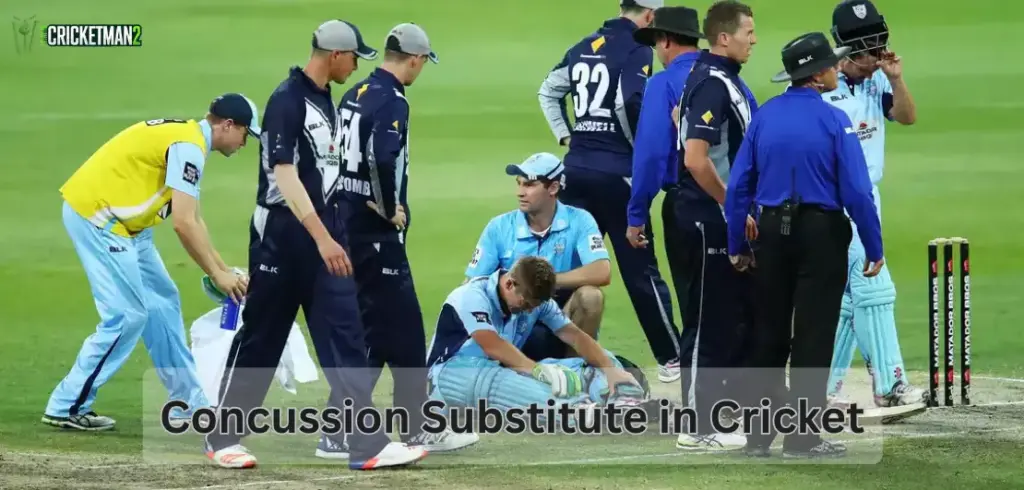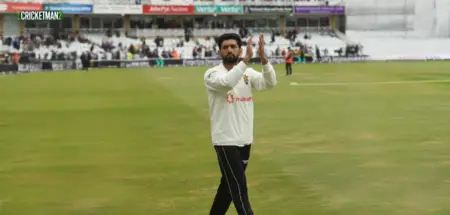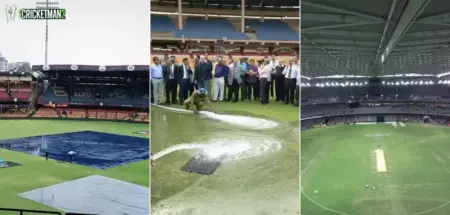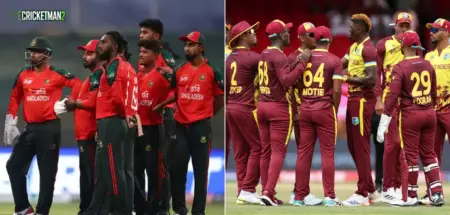Cricket has evolved over the years with new rules to protect players’ safety and maintain the spirit of fair play. One such important rule is the Concussion Substitute, introduced by the International Cricket Council (ICC) in 2019. This rule allows a player who suffers a concussion during a match to be replaced by another player — ensuring both medical safety and balance in the contest.
Concussion Substitute in Cricket Overview:
| Feature | Details |
|---|---|
| Introduced by ICC | 1 August 2019 |
| Applies to | All formats (Test, ODI, T20I, First-Class) |
| Replacement Type | Like-for-Like (based on role) |
| Approval Authority | ICC Match Referee |
| Latest Update | June 2025 – teams must name 5 possible substitutes before toss |
| Stand-Down Rule | 7 days rest after confirmed concussion |
What is a Concussion and Why This Rule Was Introduced
A concussion is a mild traumatic brain injury caused by a sudden blow to the head or neck, leading the brain to move inside the skull. It can cause dizziness, confusion, or loss of coordination, and in severe cases, long-term health risks.
Earlier, players who got hit on the helmet often continued playing, risking further injury. To prioritize player health and safety, the ICC implemented the concussion substitute rule from 1 August 2019, making it applicable in all formats — Tests, ODIs, T20Is, and first-class cricket.
The rule was inspired by tragic incidents like the death of Australian cricketer Phillip Hughes, which highlighted the need for stronger head-injury protocols in cricket.
Read Also:- Super Over Rules in Cricket: History, Rules
When Can a Team Use a Concussion Substitute
A team can request a concussion substitute only when:
- The injury happens on the field during active play.
- The player is diagnosed with a concussion or suspected concussion by the team’s medical representative.
- A Concussion Replacement Request is submitted to the ICC Match Referee on a standard form.
The form must include:
| Information Required | Description |
|---|---|
| Player Name | The player who sustained the concussion |
| Incident Details | Time and manner of injury |
| Medical Confirmation | Statement by team doctor confirming concussion |
| Proposed Replacement | Name and role of the substitute player |
Once the request is reviewed, the Match Referee decides whether to approve the replacement based on the ICC’s “like-for-like” principle.
Understanding the ‘Like-for-Like’ Replacement Rule
The like-for-like rule ensures fairness by allowing the replacement player to have a similar role to the injured player.
- A batter can be replaced only by another batter.
- A bowler can be replaced by a bowler.
- An all-rounder may be replaced by another all-rounder, but not by a specialist in just one discipline.
The Match Referee evaluates the likely role the injured player would have played in the remaining match and whether the replacement offers any unfair advantage.
If necessary, restrictions may be imposed — for instance, if the concussed player was not allowed to bowl, the replacement won’t be allowed to bowl either.
Recent ICC Updates on Concussion Substitute Rule (2025)
In June 2025, the ICC revised the concussion protocol to make it more structured and transparent:
- Teams must name five possible concussion substitutes before the toss:
- One wicketkeeper
- One batter
- One spin bowler
- One seam bowler
- One all-rounder
- A player diagnosed with a concussion must observe a minimum stand-down period of seven days before returning to competitive cricket.
- If a concussion substitute also suffers an injury, the match referee may allow another replacement from outside the initial five, ensuring teams can complete the game.
These changes came after several on-field debates and confusion over what qualifies as “like-for-like.”
Major Cases and Controversies
1. Ravindra Jadeja – Yuzvendra Chahal (2020, Canberra T20I)
Ravindra Jadeja was hit on the helmet while batting and was replaced by Yuzvendra Chahal. The move drew criticism from Australia, who claimed the roles weren’t similar. However, the ICC Match Referee allowed the change as per the rule since Jadeja wouldn’t have fielded due to injury.
2. Shadab Khan – Usama Mir (2023 World Cup)
Pakistan’s Shadab Khan was replaced by Usama Mir after sustaining a concussion against South Africa. Mir became the first-ever concussion substitute in ODI World Cup history, taking two wickets and showcasing how effectively the rule works.
3. Shivam Dube – Harshit Rana (India vs England, 2025 T20I)
This case sparked fresh debate. India replaced all-rounder Shivam Dube with pacer Harshit Rana after Dube suffered a head injury. Critics, including England captain Jos Buttler and former player Kevin Pietersen, claimed the move wasn’t “like-for-like.”
However, match referee Javagal Srinath approved the substitution under the ICC’s guidelines, considering Dube’s limited bowling role in recent matches.
How the Rule Balances Safety and Fairness
The ICC concussion substitute rule aims to protect players while keeping the game fair.
Its key principles are:
| Aspect | Purpose |
|---|---|
| Medical Safety | Encourages immediate player withdrawal after head injury |
| Competitive Balance | Ensures replacement does not create undue advantage |
| Transparency | All substitutions approved and documented by ICC referees |
| Evolution | Rules revised regularly to close loopholes and improve clarity |
Expert View & Future Improvements
Experts agree that while the rule prioritizes player welfare, it still requires fine-tuning. Situations like Dube–Rana show that “like-for-like” is subjective, depending on the referee’s interpretation.
The ICC may introduce clearer definitions in the future — such as limiting substitute overs or defining a player’s primary discipline more precisely — to avoid confusion and maintain consistency across series.
Read Also:- Match Suspended Meaning in Cricket
Conclusion
The Concussion Substitute Rule represents one of ICC’s most significant steps toward player safety in modern cricket.
Though occasionally controversial, it ensures that players aren’t pressured to continue after head injuries. As technology and understanding of head trauma evolve, so will the rule — but its purpose remains clear: to protect cricketers’ health without compromising the integrity of the game.




